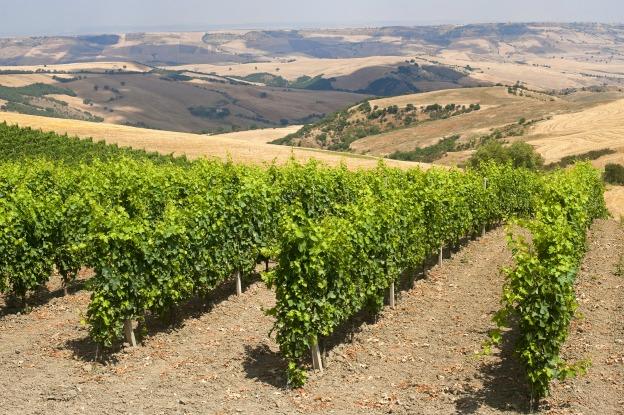“Aglianico is probably the grape with the longest consumer history of all,” oenologist and winemaker Denis Dubordieu has said. Winemaking in Basilicata has been practiced for more than a thousand years, and Aglianico, one of southern Italy's great red wines, dubbed the ‘Barolo of the South’, was introduced in the region by the Greeks, who settled large portions of Southern Italy, including Basilicata, beginning in the 8th century BC.
In ancient Rome, the grape was used to improve Falernian, the world's earliest first-growth wine and a favorite of the Romans. It was mentioned by author and wine aficionado Pliny the Elder (incidentally, did you know that the famous Latin quotation in vino veritas, there’s truth in wine, comes from Pliny?). Even today, 40% of the production is destined for areas outside Basilicata, where it is used to improve other wines.
The Aglianico grape was called Ellenico, the Italian word for "Greek", until the 15th century, when it acquired its current name. It is thought that it was during the Middle Ages that Aglianico became Basilicata’s leading grape variety, and it has remained so through the centuries (although other varieties are gaining more attention).
Basilicata’s star wine, Aglianico del Vulture, the only DOCG of the region, is made from the Aglianico red grape cultivated in and around the extinct volcano Mount Vulture, in the northern area of the province of Potenza. The vineyards are located on the lower slopes, where ash deposits are thickest. It is this volcanic soil that gives Aglianico its distinctive features.
The grape’s thick skin and natural high acidity make it ideal for Basilicata's hot Mediterranean climate. Grapes ripen late in the season, after being exposed to a long, warm, dry summer. In the case of a cooler summer, the harvest can go as late as the first week in November.
It is this extended growing season that makes Aglianico a full-bodied wine, deep in color and rich in flavor. It pairs well with rich meats, roasts and wild game.






